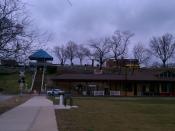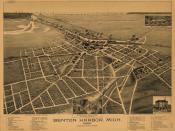A book usually follows a set of standards and guidelines that make it a great read; the obvious details include an introduction to the settings and characters, rising action, the climax, the dénouement, and the conclusion. Some authors however can still create an excellent story while skipping one or more of these parts; and these legacies still live on. However, it is a rare find when an author starts with the climax on the very first page, and makes the dénouement last until the final page, and still has a great book. Alex Kotlowitz accomplished this in The Other Side of the River by bringing in other elements and stories involving poverty, race, safety, and more; literally using the death of Eric McGinnis as an excuse to tell a story yearning to be untold, one of the lives, deaths, and mentalities, of thousands of people, white and black alike.
On the very first page, Kotlowitz identifies the climax: the murder of Eric McGinnis and the effects it had on the inhabitants of the two affected communities: Benton Harbor and St.
Joseph, both in Michigan, separated only by a small river. These two towns were physically only two and a half miles apart, and the river between them is only a quarter of a mile wide; however, Kotlowitz described the two cities as being worlds apart. From the beginning, the dichotomy was evident: ninety-two percent of Benton Harbor's population is black, and ninety-five percent of St. Joseph's population is white. St. Joseph is rich and an excellent place to live in while Benton Harbor is impoverished, and was voted as the worst place to reside by many magazines and researches. The uncharismatic appearance of Benton Harbor had long cast its shadow on St. Joseph, whose denizens carried a grudge against their...


